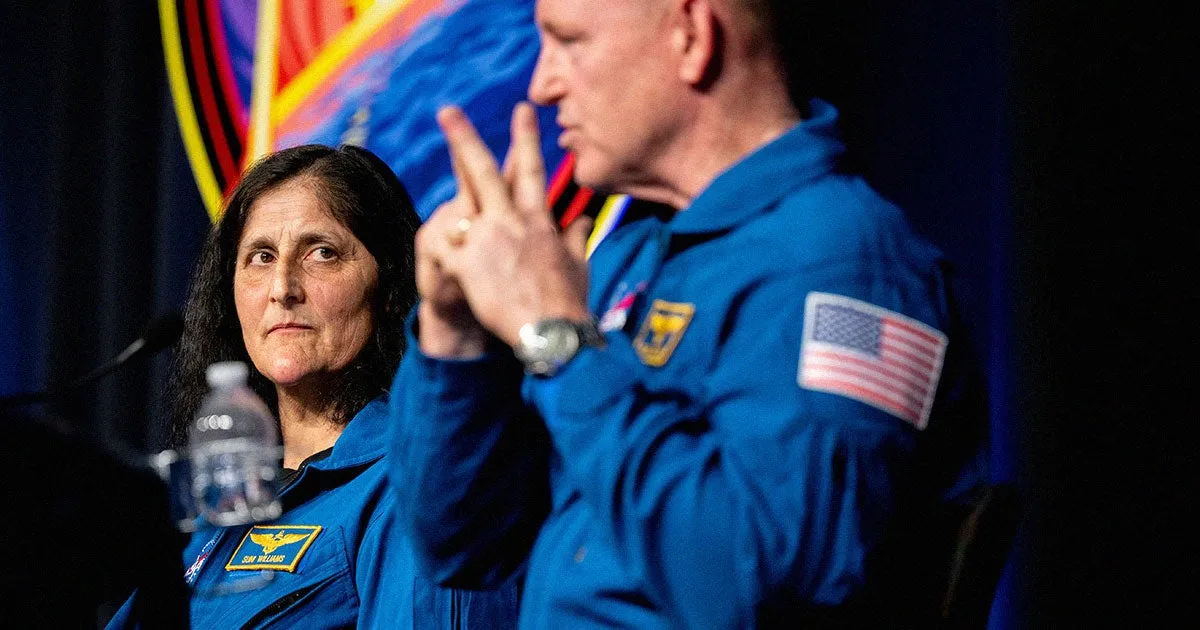
It has been ten months since NASA astronauts Butch Wilmore and Suni Williams embarked on their mission to the International Space Station (ISS) aboard Boeing's troubled Starliner spacecraft. After enduring years of setbacks, Starliner finally lifted off from Space Launch Complex-41 at NASA's Cape Canaveral Space Force Station in Florida on June 5, 2024. This milestone came after three separate launch scrubs and the alarming discovery of several helium leaks.
However, the challenges did not cease once the capsule reached orbit. The docking procedures with the ISS were fraught with complications, primarily due to malfunctions in the reaction-control thrusters. In a recent interview with Ars Technica, both astronauts revealed that the situation was even more perilous than initially reported. “I don't know that we can come back to Earth at that point,” Wilmore told Ars' Eric Berger. “I don't know if we can. And, matter of fact, I’m thinking we probably can't.”
This alarming admission highlights the significant dangers that both Wilmore and Williams faced. The revelation that NASA had altered flight rules to permit Starliner to attempt docking with the ISS, despite multiple thruster failures, raises serious questions about the safety protocols in place. This is particularly concerning given the ongoing issues surrounding Boeing's Starliner project, which has consumed billions of dollars without completing a single successful crewed mission to and from the ISS.
While the launch aboard a United Launch Alliance Atlas rocket went smoother than expected, things turned chaotic when the reaction control system thrusters began failing, complicating the already challenging docking procedures. Prior to the launch, Wilmore had been briefed on the potential for thruster failures that could lead to a situation where the crew would be unable to control the spacecraft, adding to the mounting tension.
As they attempted to dock with the ISS, Wilmore described their precarious position, stating, “We’re single fault tolerant,” which meant that they were one failing thruster away from losing complete control of the capsule. “I know the flight rules,” he remarked, reflecting on the gravity of their situation. Heated discussions at NASA headquarters ultimately led to the decision to waive certain flight rules regarding the loss of thrusters, despite the evident risks involved.
Wilmore recounted, “I did not know that the flight directors were already in discussions about waiving the flight rule because we've lost two thrusters. We didn’t know why. The flight rules just dropped.” He noted that they had passed the point where they were supposed to leave, and he was now manually controlling the spacecraft under conditions of zero-fault tolerance. “Oh my, the control is sluggish,” he added, comparing the spacecraft's performance to its initial launch day.
With four out of the 28 reaction control system thrusters failing during the mission, the situation was dire. Thankfully, two of the thrusters came back online after a remote reset by NASA. After spending nine months aboard the ISS, the astronauts returned to Earth using a SpaceX Crew Dragon capsule. Their original mission was intended to last only a week.
NASA is diligently working on getting Starliner back into action, having returned without the astronauts in September. In a recent update, the agency announced that progress is being made toward the crew certification of Boeing’s CST-100 Starliner. Teams are focused on resolving in-flight anomalies and preparing for propulsion system testing in the upcoming months. However, according to NASA’s Commercial Crew Program manager Steve Stich, the next flight attempt will likely not occur until late 2025 or early 2026, leaving the future of the troubled spacecraft uncertain.
For more updates on Starliner and NASA's ongoing investigations into Boeing's in-flight anomalies, stay tuned.